












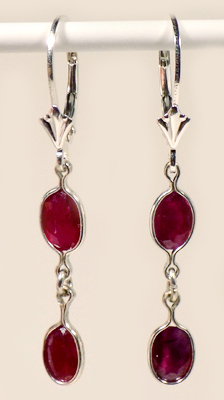
Four Genuine Antique 19th Century Genuine Natural Blood Red Two-Third Carat Faceted Ruby Oval Gemstones. Mounted into contemporary high quality sterling silver dangling “leverback” earrings.
CLASSIFICATION: Faceted Ruby Precious Gemstone Oval.
SIZE: Length: 6mm. Width: 4mm. Depth (Thickness): 2mm. Measurements approximate.
WEIGHT: (total gemstone weight): 2.45 carats..
NOTES: Upon request we can set your gemstones as a ring, pendant, or as earrings (click here for more information).
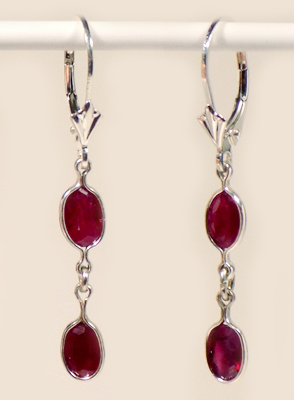
DETAIL: In Medieval England, ruby was used for royal coronation rings. Ruby was also worn as a talisman, as it was believed that the stone darkened when danger was near and then returned to its original color when the danger was past. In Medieval Europe ruby was priced 8 times higher than diamond. Medieval Europe also believed that ruby had important medical applications. A thirteenth century prescription to cure liver problems called for powdered ruby, and it was also believed that when rubbed on the skin, ruby would restore youth and vitality. Ruby was also thought to be an antidote to poisoning as well, and to protect the wearer from lightening, plagues, sorrow, and evil spirits.
Very good quality 19th century antique hand faceted blood red ruby oval gemstones. This precious gemstones are transparent, eye clean, and of higher value characteristics as opposed to lower value translucent rubies. Of course most ruby gemstones are anywhere from lightly to heavily included. Unfortunately most transparent "rubies" sold even by the largest and most reputable retailers in the United States are synthetic (read the fine print; and the same is true of emeralds and sapphires). These particular specimens are an exception, they are natural (not synthetic) precious gemstones. While these particular gemstones might not be absolutely flawless, they are transparent and eye clean, and definitely well toward the higher end of the quality spectrum.
At magnification they are seen to possess only a few very faint, almost indiscernible colorless inclusions. In summary they are quite satisfactory specimen, to the eye clean and transparent, and possesses the much sought after blood red color which has captivated mankind for eons. The trained eye will easily discern from the photo that the gemstones have been hand-faceted. The coarseness of the 19th century faceting is considered appealing to most gemstone collectors, and is not considered a detriment. Unlike today's computer controlled machine processes, the cut and finish of gemstones such as these are the legacy of an artisan who lived two centuries ago. Such antique hand-faceted gemstones possess much greater character and appeal than today's mass-produced machine-faceted gemstones.

The earring settings are of contemporary origin. They are high quality settings manufactured by one of the USA’s leading semi-custom mount producers. They are constructed of sterling silver; they are not cheap, silver electroplated earrings. It is genuine sterling silver, designed to last a lifetime. It's a first-class piece of jewelry throughout. We can reset in 14kt solid gold or 14kt gold fill upon request, and there are also many other setting styles available upon request.
This gemstones have great luster and sparkle, and to the eye are transparent, but they are not absolutely flawless. True, the blemishes the gemstones possess are virtually invisible to the naked eye, and the gemstones can be characterized, to use trade jargon, as "eye clean". However magnified 500% you can see slight imperfections within the gemstones and occasional irregularities in the faceting and finish. But these characteristics are not only expected of hand-finished gemstones, you must also consider that two centuries ago the mining techniques even theoretically possible, let alone commonly practiced, did not allow the ultra-deep mining operations which are so commonplace today.
Two centuries ago mankind was more or less limited to surface deposits or near surface deposits of gemstones. Higher quality gemstones which today are routinely mined from beneath hundreds of meters, even kilometers beneath the earth's surface, were simply inaccessible then. So antique gemstones must be appreciated as antiques first, and gemstones second. The relatively superlative quality of contemporary gemstones routinely mined from deep beneath the earth's surface today were simply not accessible two centuries ago, or at least, only rarely so. However for most, the unique nature and character of antique gemstones such as this more than makes up for included imperfections which by and large, are only visible under high magnification.
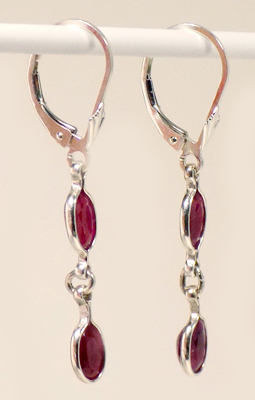
RUBY HISTORY: The name ruby comes from the Latin "rubeus" (red). In the ancient world ruby was believed to possess magical powers, and was worn as a talisman for protection from plagues, poison, sorrow, and evil spirits. The ruby symbolized freedom, charity, dignity and divine power, and was associated with fire and blood, implying warmth and life for mankind. Some ancient cultures believed that rubies, as well as other gemstones, grew on trees, just like fruit. The rubies would begin budding as small white gems, and would slowly grow and ripen, turning red in the light of the sun. When the ruby was saturated with red color, it was ready to be plucked. In the classical world, rubies from Afghanistan, Ceylon, India were traded in the ancient port cities of the Eastern Mediterranean (often by Phoenicians), and from there traveled throughout Europe. However it is believed that most of the ancient world’s ruby came from Ceylon, where evidence suggests ruby may have been mined for the past 20,000 years. Archaeologists have uncovered ancient Etruscan jewelry with Celanese ruby which dates back to the seventh century B.C. However scientists believe that ruby has also been mined in B since Paleolithic and Neolithic times as well, as tools have been excavated by archaeologists dating both to the Bronze Age as well as backwards into the Stone Age.
In ancient literature, the ruby was described both by the fourth century B.C. Greek Philosopher/Scientist Theophratus (student and successor of Plato and Socrates) as well as by Pliny, the first century A.D. Roman historian and naturalist. In ancient Rome the ruby was associated with the principles of justice and its administrators (the judicial system). Ancient literature from China indicates that ruby was traded along the northern silk route, moving westward into Europe. The Bible as well makes numerous mentions of ruby, first as one of the twelve precious stones created by God when he created mankind. Ruby is then described as “the lord of gems” when one was given to Aaron on the command of God. And ruby adorned Aaron's breastplate and was symbol of Judah. The Bible also frequently states that the high value of ruby was only exceeded by wisdom and by virtuous women, implying that ruby indeed was exceptionally valuable. The Greeks believed that the "fire" evidenced by a ruby's red coloration could melt wax. Greeks legends speak about huge rubies which were given to Heraclea by the female stork to lighten her room as a token of her kindness. The ancient populations of the Mediterranean also believed that the color of a ruby would change mirroring changes in the health of its owner, and that the color would drain from a ruby at the moment its owner died. In Antiquity and through the Middle Ages it was believed that the cosmos was reflected in gemstones. Ruby was associated with the planet Mars.
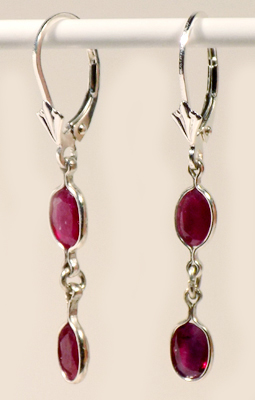
Ruby was deemed to be the most precious of gemstones not only in the Bible, but also in ancient Sanskrit writings. In Sanskrit, an ancient language of India, ruby was called "ratnaraj", which means "King of Gems". To them, this fiery stone burned with an inextinguishable fire, capable of boiling the water in which it was placed. Ancient Indian legends said that God first created ruby and later created man to possess it, and that he who offered rubies to the gods would be reincarnated as a powerful king or emperor. In ancient India rubies were also sorted into upper class, middle class, and lower class stones in relation to their color, flawlessness and beauty. Much like Indian society today, no inferior ruby was allowed contact with an upper class ruby because it was believed the low-caste ruby would contaminate the better one, thereby diminishing its magical powers. In nearby ancient B it was felt a ruby must not just be worn, but embedded in the skin to become part of the body, thus making the wearer invulnerable. Up in time through Medieval Europe, rubies were worn as a talisman for protection against unhappiness, lightening and upsetting dreams. The ruby was also believed to encourage bliss, and was used to treat fever and heart disorders relating to blood flow through the ventricles. It was also believed that when worn on the left hand or in a brooch on the left side, ruby enabled the wearer to live in peace among enemies.
Ruby was greatly valued in the Medieval Arab world. There are many references to ruby in ancient Arabic literature, including many references to “yakut”, a term used for red corundum (ruby) during the sixth through tenth centuries, culminating in a noteworthy treatise by the 11th century Arab scholar Al-Biruni, who conducted specific gravity determinations on a whole series of gemstones. Throughout Medieval Central Asia, the Near East, and China ruby was used to ornament armor, scabbards, and harnesses of noblemen. Rubies were laid beneath the foundation of buildings to secure good fortune to the structure. Much of the ruby reaching early Medieval Europe came from Badakshan, on the border between present-day Tajikistan and Afghanistan. Marco Polo described visiting these mines in his accounts of his travels. Later Medieval Europe’s rubies came principally from the border region between Burma and Siam.
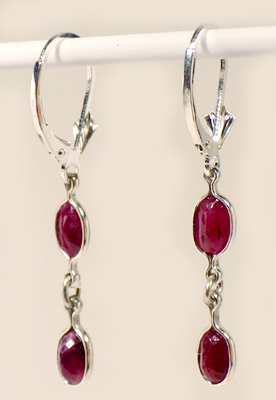
In Medieval Europe, rubies were considered even more valuable than diamonds. In 16th century ruby was priced 8 times higher than diamond. Rubies were viewed as a stone of prophecy, used by medieval shamans and sorcerers to divine the future. Ruby was also worn as a talisman, as it was believed that the stone darkened when danger was near and then returned to its original color when the danger was past. It was believed that wearing ruby would attract good health, wisdom, fortune, and true love. Ruby was also thought to be an antidote to poisoning as well. In England, ruby was used for royal coronation rings. Medieval Europe also believed that ruby had important medical applications. A thirteenth century prescription to cure liver problems called for powdered ruby, and it was also believed that when rubbed on the skin, ruby would restore youth and vitality. Ivan the Terrible of Russia stated that rubies were good for the heart, brain and memory.
The famous "Hill of Precious Stones", near Bangkok, Thailand, yields rubies of a deeper shade with purple undertones. Rubies from Ceylon (Sri Lanka) tend toward violet, and are lighter in color. Oriented rutile crystal inclusions cause a six-rayed-star light effect (called asterism) to form the popular "Star Ruby". The "Star Ruby" is also known as a "Mysore Ruby", as the majority are mined in Mysore, India. However the largest star ruby known is a 138.7 carat specimen which was mined from Ceylon, and is presently at the Smithsonian in Washington, D.C. The color of ruby is accompanied by a marked fluorescence, which is stimulated by natural and artificial light making rubies turn brighter red under such light. The King of Ceylon was said to possess a ruby that shone so brightly that when he brought it out at night, it would light up the entire palace. Experts consider that the color is ruby’s most important attribute, while its transparency is secondary. It is almost impossible to find a ruby of finer quality over 3 carats in size, therefore, minor blemishes are deemed acceptable and most ruby jewelry is made with stones under 3 carats. In fact the blemishes within a ruby are like fingerprints, proving its authenticity and revealing the beauty and the individuality of each stone.
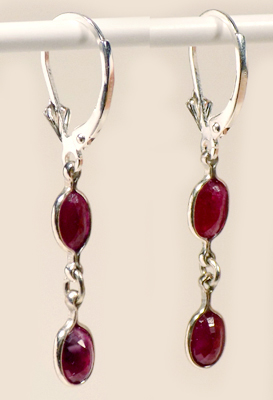
Throughout the history of the ancient world, gemstones were believed capable of curing illness and providing protection. Found in Egypt dated 1500 B. C., the "Papyrus Ebers" offered one of most complete therapeutic manuscripts containing prescriptions using gemstones and minerals. Gemstones were not only valued for their medicinal and protective properties, but also for educational and spiritual enhancement. In these as well as other ancient cultures, it was believed that rubies brought health, wealth, wisdom, and success in love to those who wore them. The ruby was associated with the sun, and was thought to preserve both mental and physical health. The medicinal uses of ruby included its use to overcome exhaustion and calm hyperactivity. Ruby was also used to detoxify the body and blood, treat fevers, diseases, and restricted blood flow. Wearing ruby was believed to benefit the heart and circulatory system and stimulate the adrenals, kidneys, reproductive organs and spleen. According to one ancient text, ground to a fine powder and placed on the tongue, ruby was used to cure blood diseases, stop bleeding, ensure good health, bring peace, and treat indigestion. Ruby was also believed to be an effective treatment for backaches.
 On the metaphysical plane, for thousands of years, ruby was considered the stone of love, passion, and power. It was believed to represent masculinity, nobility, and valor in men; pride, seductiveness, and passion in women. Ruby was believed to restore vital life forces and increase energy, vigor, and zest for life. Ruby was also regarded as the stone of courage, ancient sources citing that the wearer of ruby could pass through life without fear of evil or misfortune, and that ruby would make the wearer invulnerable to wounds, an especially useful attribute for ancient warriors. Wearing ruby was believed to strengthen the wearer during times of controversy or dispute, to shield against physical attack, to enhance creativity and spirituality, and to inspire confidence and self-esteem. Ruby was also believed to be capable of arousing passion and enthusiasm and attracting sexual activity. Even today in Asia ruby is worn by businessmen who believe that ruby improves motivation and the setting of goals, and promotes dynamic leadership. They are believed to heighten one’s state of mind, sharp, hyper-aware and focused.
On the metaphysical plane, for thousands of years, ruby was considered the stone of love, passion, and power. It was believed to represent masculinity, nobility, and valor in men; pride, seductiveness, and passion in women. Ruby was believed to restore vital life forces and increase energy, vigor, and zest for life. Ruby was also regarded as the stone of courage, ancient sources citing that the wearer of ruby could pass through life without fear of evil or misfortune, and that ruby would make the wearer invulnerable to wounds, an especially useful attribute for ancient warriors. Wearing ruby was believed to strengthen the wearer during times of controversy or dispute, to shield against physical attack, to enhance creativity and spirituality, and to inspire confidence and self-esteem. Ruby was also believed to be capable of arousing passion and enthusiasm and attracting sexual activity. Even today in Asia ruby is worn by businessmen who believe that ruby improves motivation and the setting of goals, and promotes dynamic leadership. They are believed to heighten one’s state of mind, sharp, hyper-aware and focused.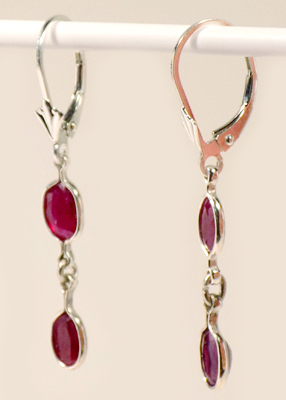
SHIPPING & RETURNS/REFUNDS: Your purchase will ordinarily be shipped within 48 hours of payment. We package as well as anyone in the business, with lots of protective padding and containers. All of our shipments are fully insured against loss, and our shipping rates include the cost of this coverage (through stamps.com, Shipsaver.com, the USPS, UPS, or Fed-Ex). International tracking is provided free by the USPS for certain countries, other countries are at additional cost. ADDITIONAL PURCHASES do receive a VERY LARGE discount, typically about $5 per item so as to reward you for the economies of combined shipping/insurance costs.
We do offer U.S. Postal Service Priority Mail, Registered Mail, and Express Mail for both international and domestic shipments, as well United Parcel Service (UPS) and Federal Express (Fed-Ex). Please ask for a rate quotation. We will accept whatever payment method you are most comfortable with. Please note for international purchasers we will do everything we can to minimize your liability for VAT and/or duties. But we cannot assume any responsibility or liability for whatever taxes or duties may be levied on your purchase by the country of your residence. If you don’t like the tax and duty schemes your government imposes, please complain to them. We have no ability to influence or moderate your country’s tax/duty schemes.
If upon receipt of the item you are disappointed for any reason whatever, I offer a no questions asked 30-day return policy. Send it back, I will give you a complete refund of the purchase price; 1) less our original shipping/insurance costs, 2) less non-refundable eBay payment processing fees. Please note that eBay does NOT refund payment processing fees. Even if you “accidentally” purchase something and then cancel the purchase before it is shipped, eBay will not refund their processing fees. So all refunds for any reason, without exception, do not include eBay payment processing fees (typically between 5% and 15%) and shipping/insurance costs (if any). If you’re unhappy with eBay’s “no fee refund” policy, and we are EXTREMELY unhappy, please voice your displeasure by contacting eBay. We have no ability to influence, modify or waive eBay policies.
ABOUT US: Prior to our retirement we used to travel to Eastern Europe and Central Asia several times a year seeking antique gemstones and jewelry from the globe’s most prolific gemstone producing and cutting centers. Most of the items we offer came from acquisitions we made in Eastern Europe, India, and from the Levant (Eastern Mediterranean/Near East) during these years from various institutions and dealers. Much of what we generate on Etsy, Amazon and Ebay goes to support worthy institutions in Europe and Asia connected with Anthropology and Archaeology. Though we have a collection of ancient coins numbering in the tens of thousands, our primary interests are ancient/antique jewelry and gemstones, a reflection of our academic backgrounds.
Though perhaps difficult to find in the USA, in Eastern Europe and Central Asia antique gemstones are commonly dismounted from old, broken settings – the gold reused – the gemstones recut and reset. Before these gorgeous antique gemstones are recut, we try to acquire the best of them in their original, antique, hand-finished state – most of them originally crafted a century or more ago. We believe that the work created by these long-gone master artisans is worth protecting and preserving rather than destroying this heritage of antique gemstones by recutting the original work out of existence. That by preserving their work, in a sense, we are preserving their lives and the legacy they left for modern times. Far better to appreciate their craft than to destroy it with modern cutting.
Not everyone agrees – fully 95% or more of the antique gemstones which come into these marketplaces are recut, and the heritage of the past lost. But if you agree with us that the past is worth protecting, and that past lives and the produce of those lives still matters today, consider buying an antique, hand cut, natural gemstone rather than one of the mass-produced machine cut (often synthetic or “lab produced”) gemstones which dominate the market today. We can set most any antique gemstone you purchase from us in your choice of styles and metals ranging from rings to pendants to earrings and bracelets; in sterling silver, 14kt solid gold, and 14kt gold fill. When you purchase from us, you can count on quick shipping and careful, secure packaging. We would be happy to provide you with a certificate/guarantee of authenticity for any item you purchase from us. There is a $3 fee for mailing under separate cover. I will always respond to every inquiry whether via email or eBay message, so please feel free to write.
b>

